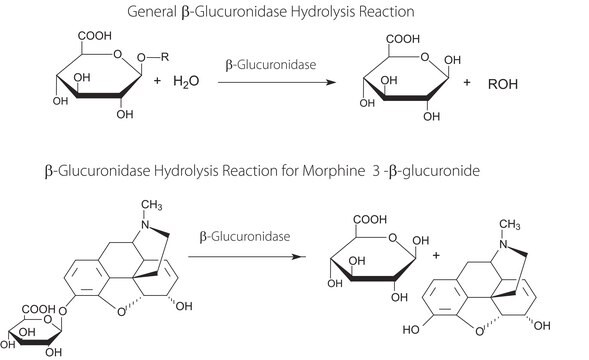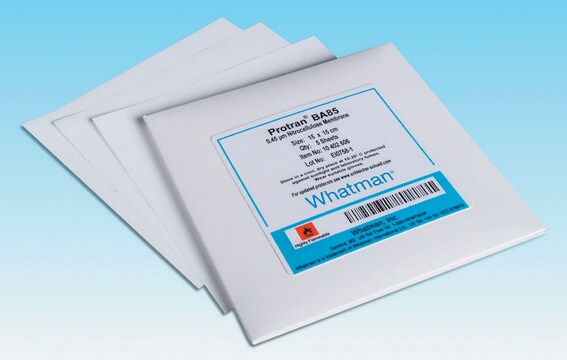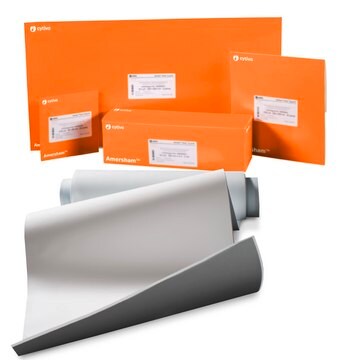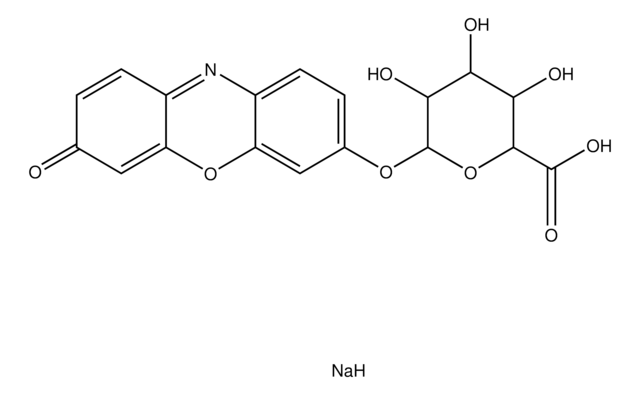MABF3208
Anti-HPV11 Antibody, clone H11.H3

Synonim(y):
HPV-11, Major capsid protein L1
About This Item
Polecane produkty
pochodzenie biologiczne
mouse
Poziom jakości
forma przeciwciała
purified antibody
rodzaj przeciwciała
primary antibodies
klon
H11.H3, monoclonal
masa cząsteczkowa
calculated mol wt 55.8 kDa
observed mol wt ~N/A kDa
oczyszczone przez
using protein G
reaktywność gatunkowa
virus
opakowanie
antibody small pack of 100
metody
ELISA: suitable
neutralization: suitable
izotyp
IgG2bκ
numer dostępu Protein ID
numer dostępu UniProt
temp. przechowywania
-10 to -25°C
Specyficzność
Immunogen
Zastosowanie
Isotype testing: Identity Confirmation by Isotyping Test.
Isotyping Analysis: The identity of this monoclonal antibody is confirmed by isotyping test to be mouse IgG2b, kappa.
Tested Applications
Enzyme Immunoassay Analysis: A representative lot of this antibody detected HPV11 protein in ELISA application.
Neutralizing: A representative lot of this antibody neutralized HPV11 in neutralizing application (Christensen, N.D., et al. (1994). Virology. 205(1):329-35; Christensen, N.D., et al. (1996). Virology. 224(2):477-86).
ELISA Analysis: A representative lot of this antibody detected HPV11 protein in ELISA application (Christensen, N.D., et al. (1990). J Virol. 64(11):5678-81; Christensen, N.D., et al. (1994). Virology. 205(1):329-35 ; Christensen, N.D., et al. (1996). Virology. 224(2):477-86; Panicker, G., et al. (2021). J Immunol Methods. 498:113136; Jerajani, K., et al. (2022). J Pharm Sci. 111(11):2983-2997).
Note: Actual optimal working dilutions must be determined by end user as specimens, and experimental conditions may vary with the end user.
Opis wartości docelowych
Postać fizyczna
Rekonstytucja
Przechowywanie i stabilność
Inne uwagi
Oświadczenie o zrzeczeniu się odpowiedzialności
Nie możesz znaleźć właściwego produktu?
Wypróbuj nasz Narzędzie selektora produktów.
Kod klasy składowania
12 - Non Combustible Liquids
Klasa zagrożenia wodnego (WGK)
WGK 2
Temperatura zapłonu (°F)
Not applicable
Temperatura zapłonu (°C)
Not applicable
Certyfikaty analizy (CoA)
Poszukaj Certyfikaty analizy (CoA), wpisując numer partii/serii produktów. Numery serii i partii można znaleźć na etykiecie produktu po słowach „seria” lub „partia”.
Masz już ten produkt?
Dokumenty związane z niedawno zakupionymi produktami zostały zamieszczone w Bibliotece dokumentów.
Nasz zespół naukowców ma doświadczenie we wszystkich obszarach badań, w tym w naukach przyrodniczych, materiałoznawstwie, syntezie chemicznej, chromatografii, analityce i wielu innych dziedzinach.
Skontaktuj się z zespołem ds. pomocy technicznej







